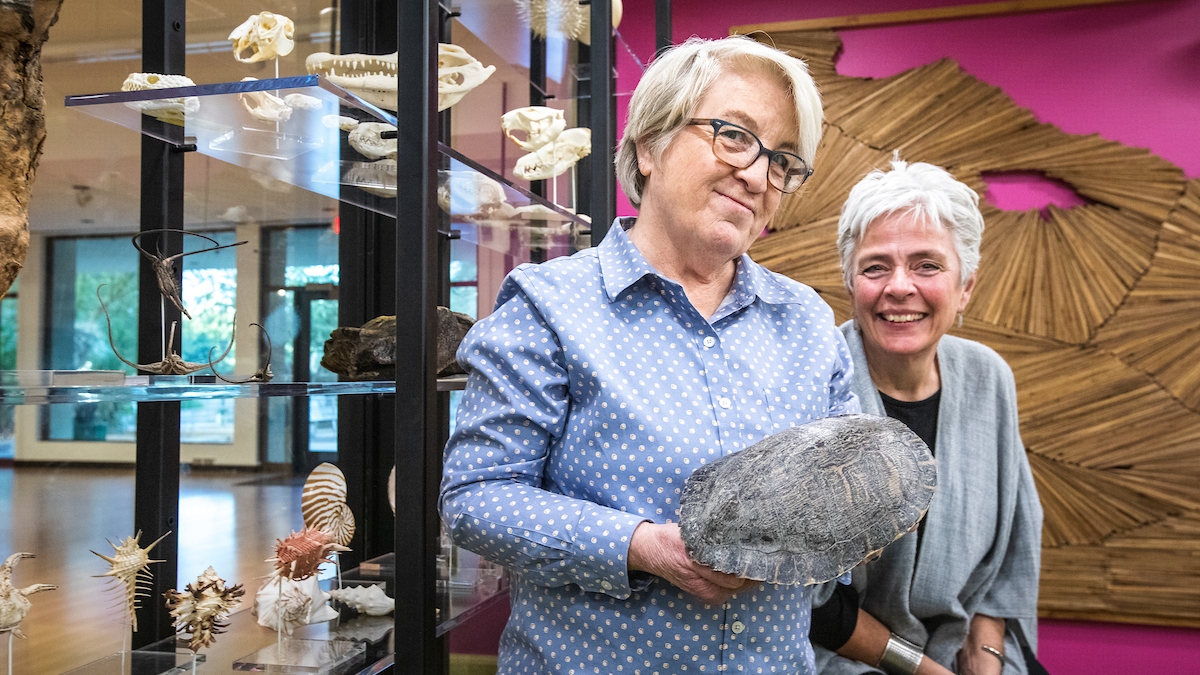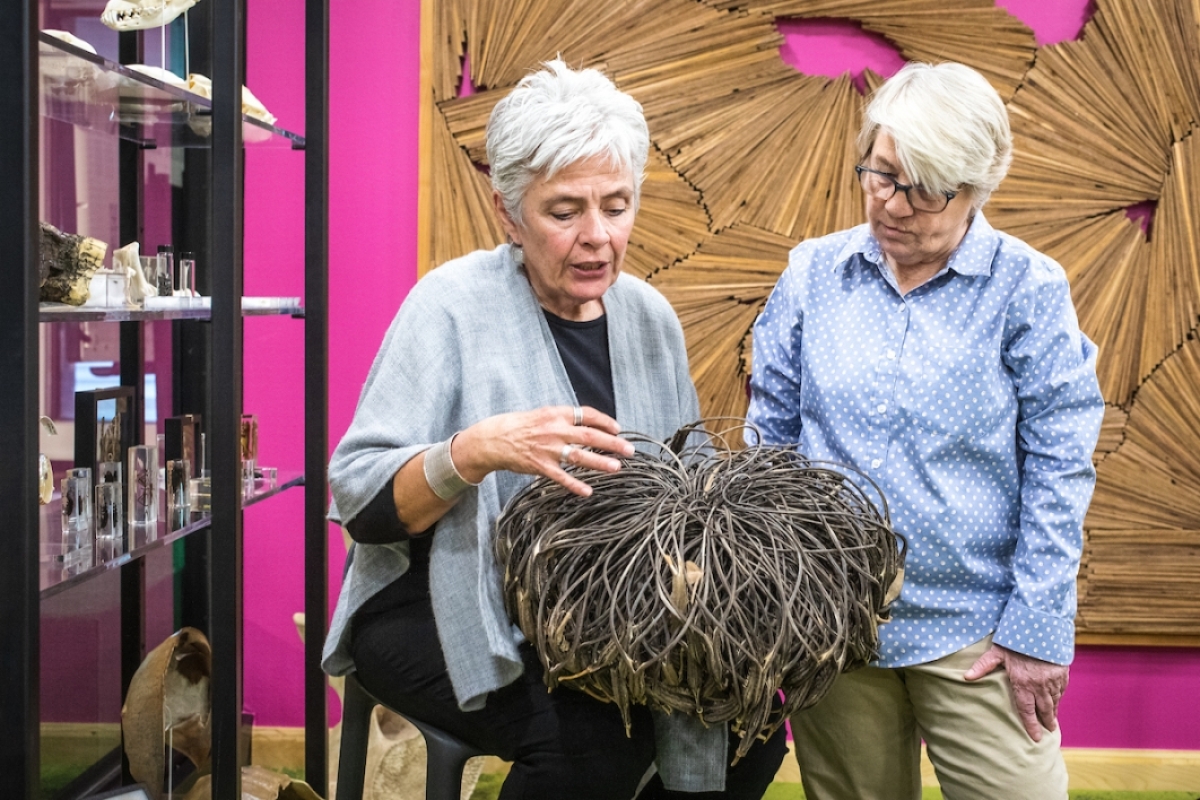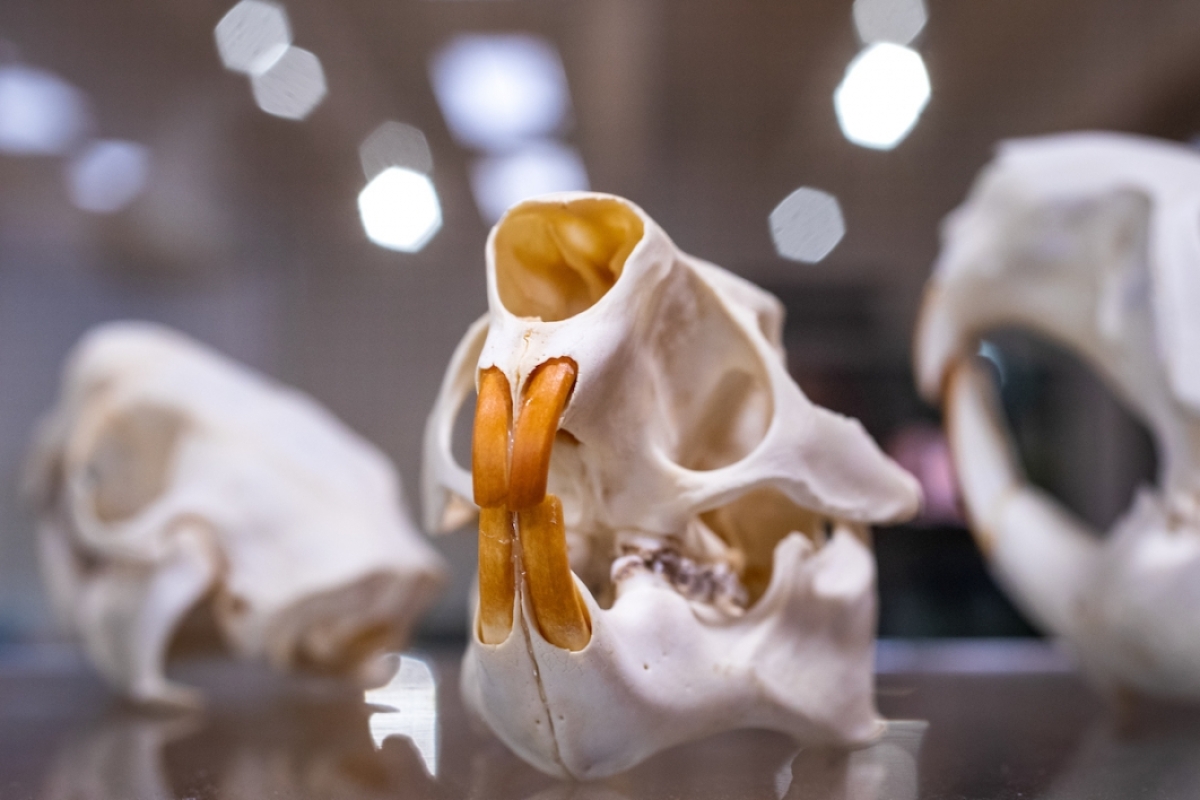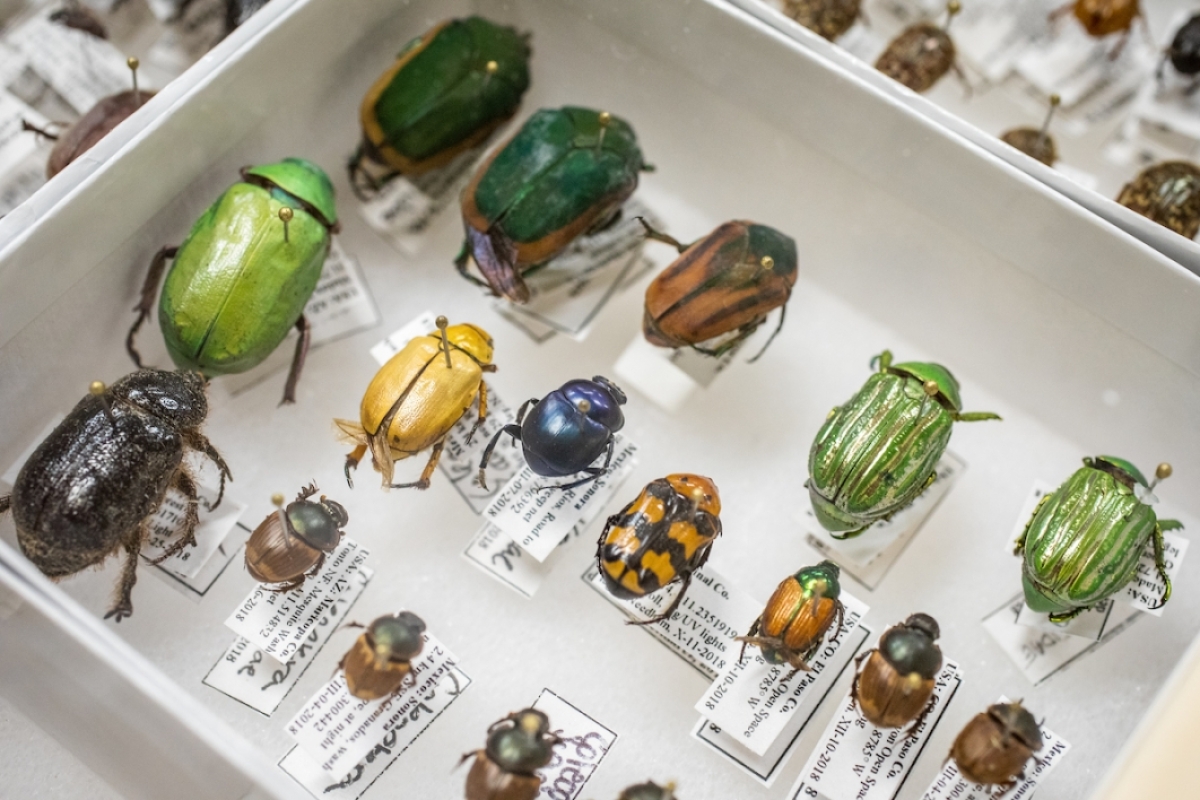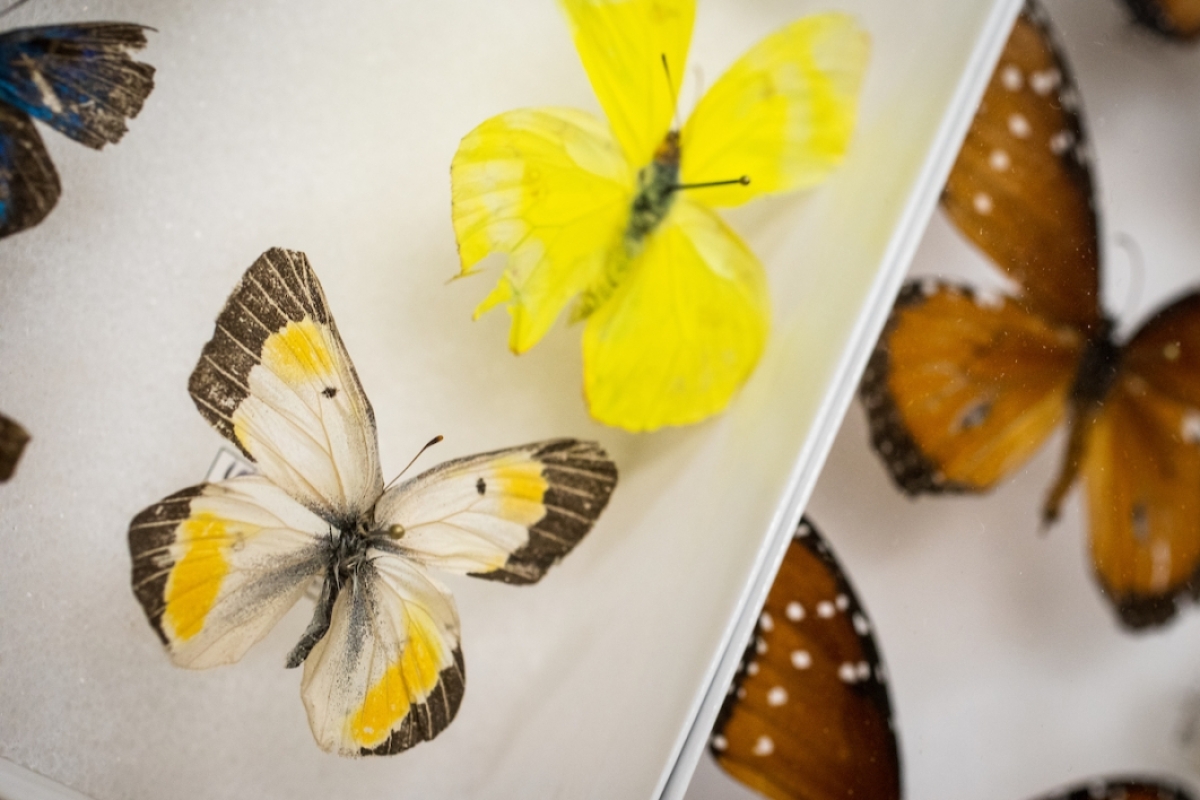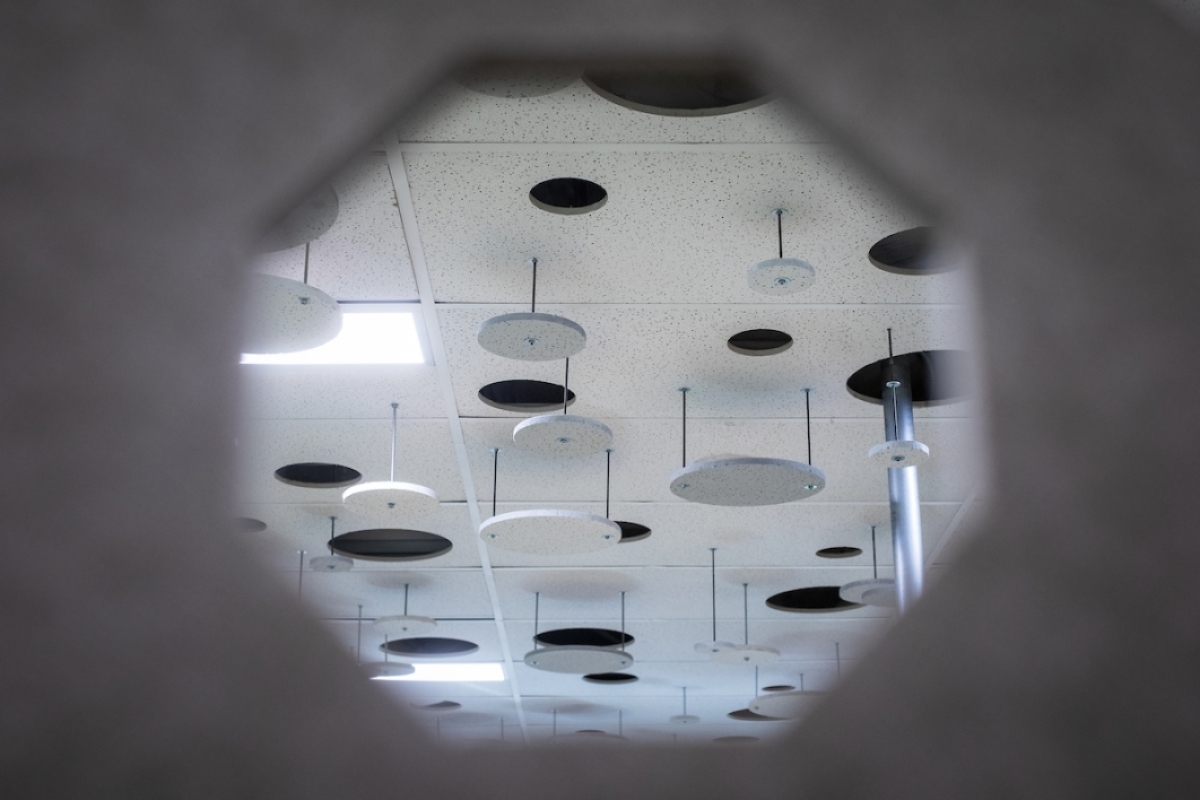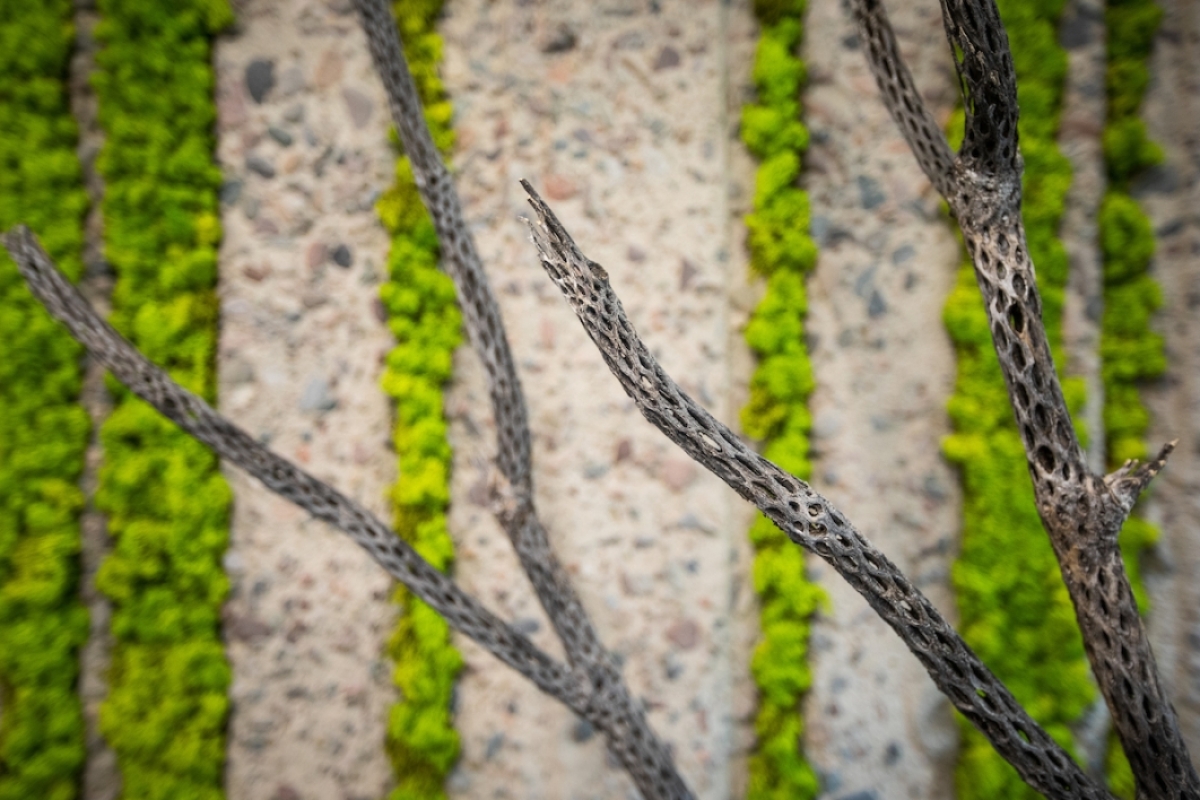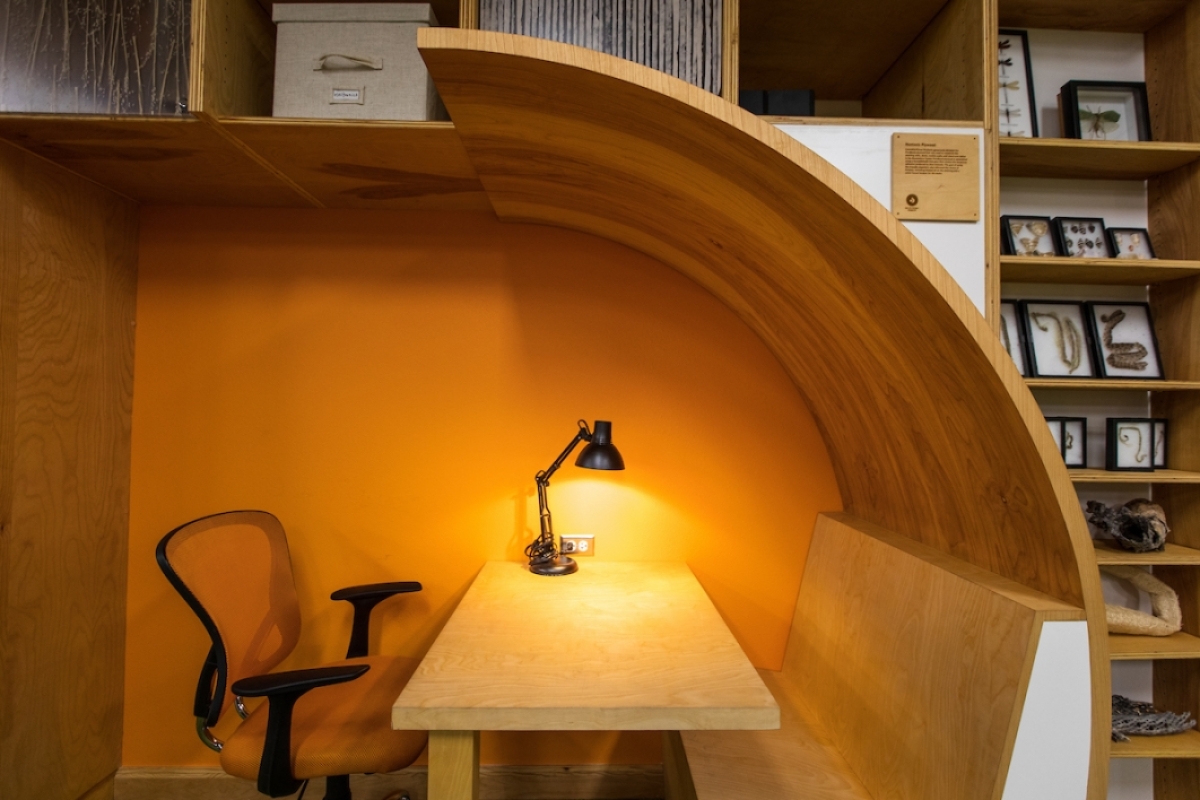Arizona State University’s Biomimicry Center The Biomimicry Center is located in the Design South building on the Tempe campus and is a joint effort between ASU and Biomimicry 3.8, a world-leading bio-inspired consultancy. opened in spring 2015, but it keeps evolving, inspiring students to take a page right out of nature.
On Jan. 22, the Biomimicry Center will debut its newly remodeled space: NatureMaker. The hands-on library includes about 2,000 individual artifacts from around the world that students can analyze and use as inspiration for biomimetic designs.
Biomimicry is an emerging discipline that allows humans to solve some of the world’s greatest challenges by mimicking nature. Adelheid (Heidi) Fischer, assistant director of the Biomimicry Center, hopes the space can provide the link to nature she believes is currently missing.
“It’s a joyful place to walk into, and there’s so much to look at and there’s so much to learn.”
At first glance, NatureMaker looks like a library; there are books along the wall and reading space throughout the room. But tucked away, nearly in plain sight, are drawers full of natural artifact collections like dragonflies, beetles and various seeds. Along the outer wall, there’s a storefront-like display with larger artifacts, including a whale vertebrae — the largest piece in the collection.
The artifacts come from a variety of places, either donated or purchased online or locally, but all have a story to tell.
“Part of what’s guided that is keeping an eye towards things that have really good natural history stories, and that could have some potential application, potential inspiration for someone who may be an engineer, architect or designer — to find a sustainable solution by mimicking that strategy or that adaptation in nature,” Fischer said.
The concept for NatureMaker was inspired by the Rhode Island School of Design’s Nature Lab, which boasts nearly 80,000 individual, natural specimens. Fischer shared her vision for ASU with Debra Riley-Huff, director of the Design and the Arts Library and division head of humanities, and in about a year’s time, the proposed concept became a reality.
“I thought it might be possible for us to start a collaboration, especially because libraries have a lot of experience in putting a collection together, cataloguing the collection, making things accessible and creating a hands-on kind of library.”
NatureMaker would not be possible without the support of ASU Library, which provided seed funding for the project. With the renovation of Hayden Library complete, both ASU Library and NatureMaker will continue partnering together, especially through Hayden Library’s renovated Makerspace, where additional artifacts will be housed. The ASU community will also be able to get 3D printouts of artifacts scanned at the NatureMaker space at Hayden’s Makerspace.
In addition to viewing artifacts at NatureMaker, the ASU community will be able to utilize various microscopes and dissection kits and check out field kits and binoculars. Some of the specimens will also be labeled with QR codes that will provide additional information to the person viewing the artifact via their smartphone.
“We’re hoping that this space is a space that inspires,” Riley-Huff said. “We just want students to leave here and feel really good and have something that they didn’t have before when they came in.”
To celebrate the debut of the newly remodeled space, Naturemaker will host an open house on Jan. 22. On Jan. 23, NatureMaker will launch its Nature@Noon series, and in the evening, host a lecture by guests of the Rhode Island School of Design’s Nature Lab, the inspiration behind the new space.
Top photo: Debra Riley-Huff (left), director of the Design and the Arts Library, and Heidi Fischer, the Biomimicry Center assistant director, look over a tortoise shell at the bio-inspired NatureMaker space in the Biomimicry Center in the Design South Building on the Tempe campus. Photo by Charlie Leight/ASU Now
More Science and technology

Brilliant move: Mathematician’s latest gambit is new chess AI
Benjamin Franklin wrote a book about chess. Napoleon spent his post-Waterloo years in exile playing the game on St. Helena. John Wayne carried a set and played during downtime while filming “El…
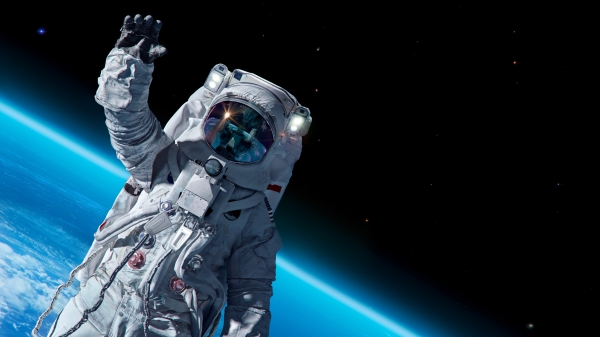
ASU team studying radiation-resistant stem cells that could protect astronauts in space
It’s 2038.A group of NASA astronauts headed for Mars on a six-month scientific mission carry with them personalized stem cell banks. The stem cells can be injected to help ward off the effects of…
Largest genetic chimpanzee study unveils how they’ve adapted to multiple habitats and disease
Chimpanzees are humans' closest living relatives, sharing about 98% of our DNA. Because of this, scientists can learn more about human evolution by studying how chimpanzees adapt to different…
